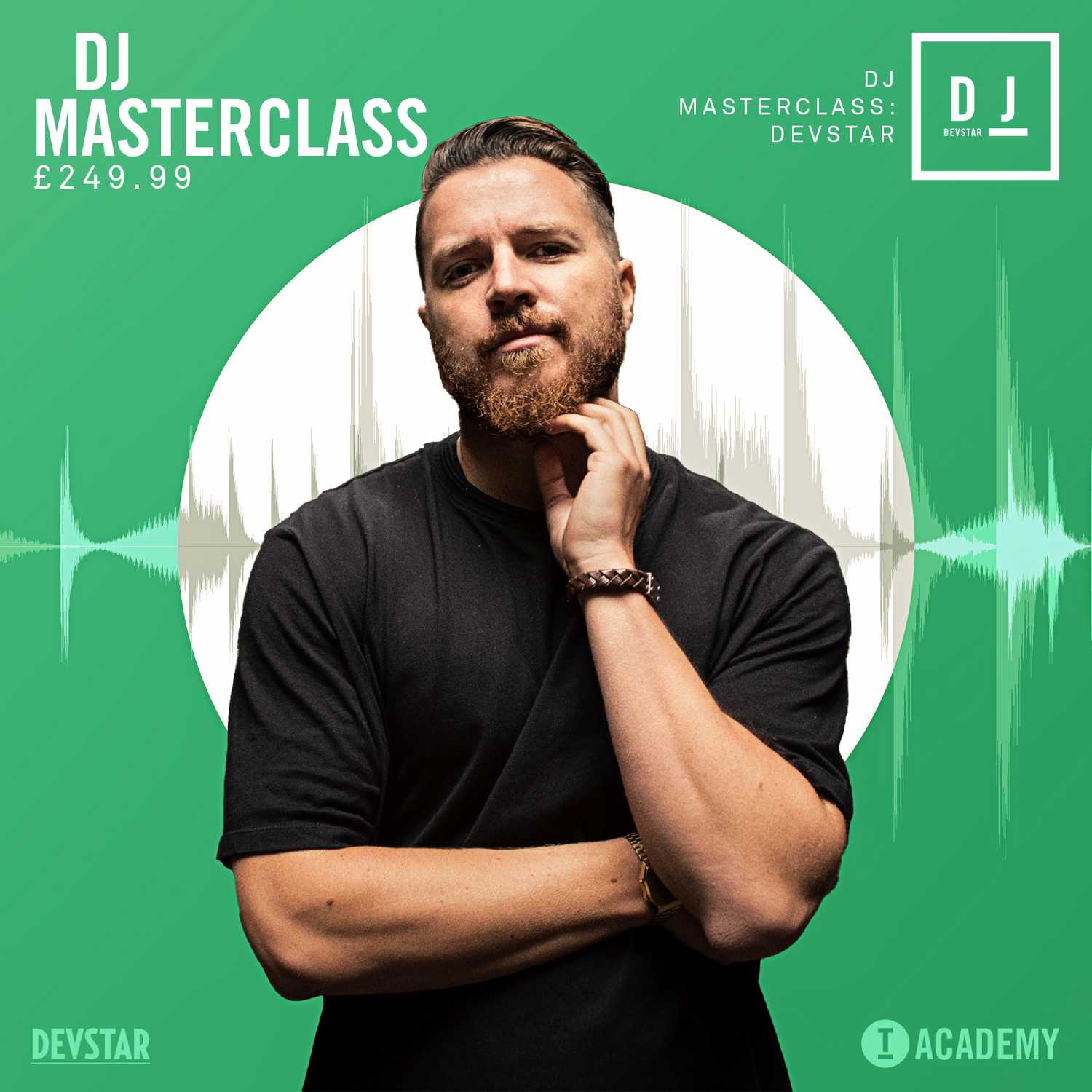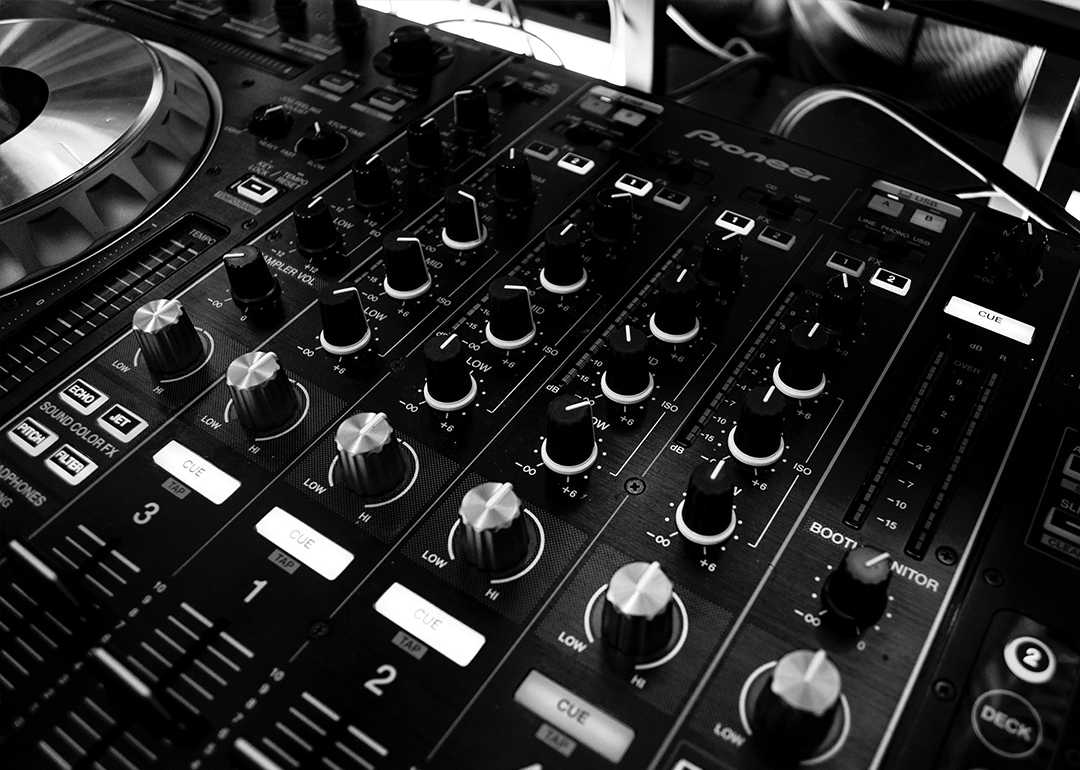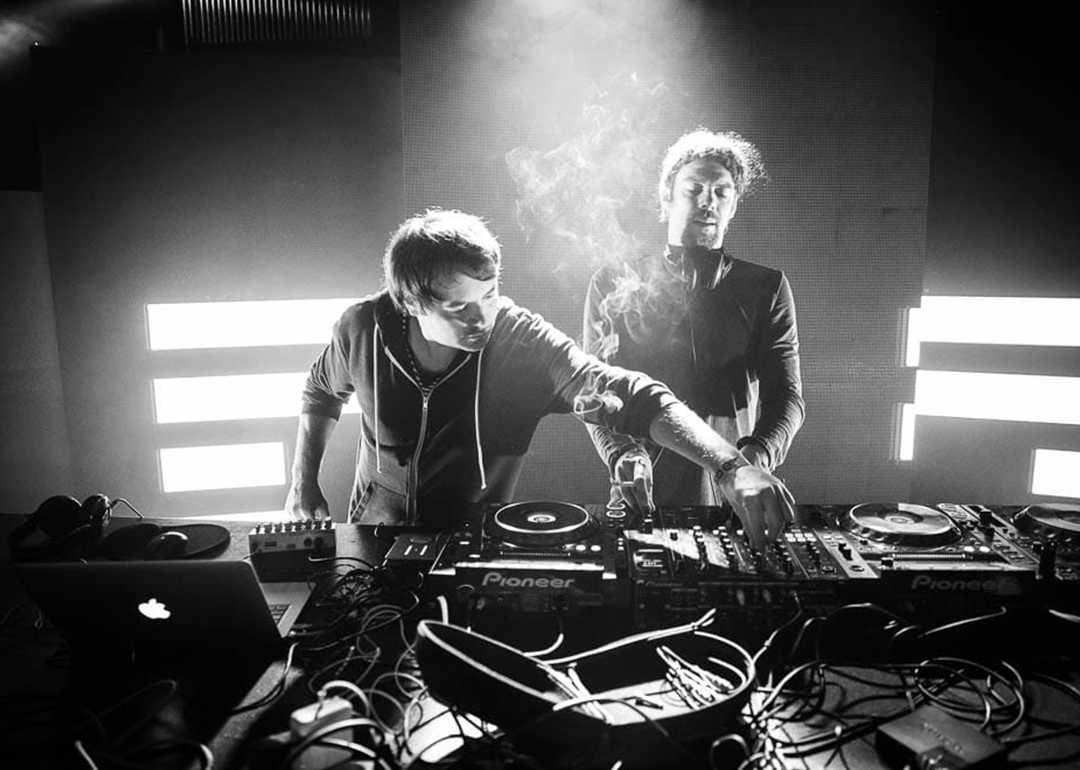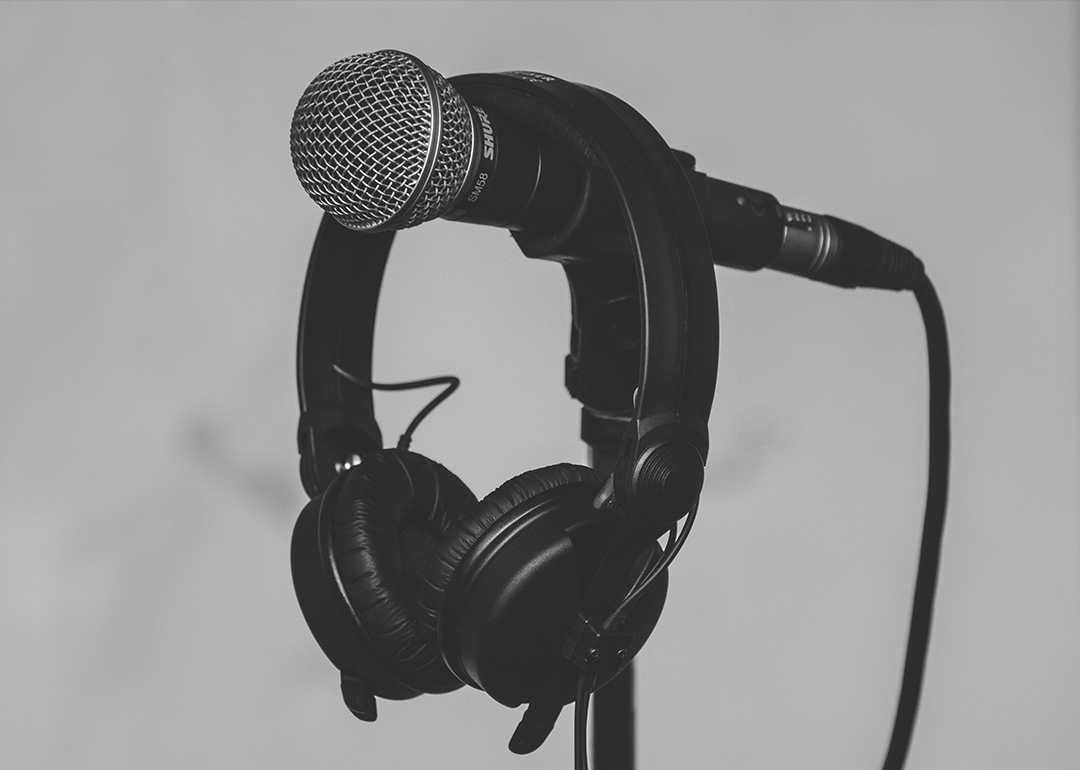has been added to your cart.

How To DJ: The Toolroom Academy Guide
Today, we're giving you a sneak peek into exactly how we have taught some of today’s biggest artists to DJ, and our accompanying Toolroom Academy DJ Masterclass.
Have you ever wanted to learn how to DJ? Toolroom Records has been in the business of providing DJs with the latest and greatest in House, Tech House, and Techno for over 15 years.
At heart, we are a label set up by DJs, for DJs. Recently, we’ve taken to providing cutting edge education on how to produce, DJ, and make it in today’s music scene. Today, we’re giving you a sneak peek into exactly how we have taught some of today’s biggest artists to DJ, and our accompanying Toolroom Academy DJ Masterclass.
Ever wanted to learn how the experts are doing it? Look no further. It’s time to get out of your bedroom, and into the club! Let’s get started.

How To DJ – Step #1: Learn The Gear!
At the heart of all DJ setups is two decks and a mixer. On each deck, music is played and sent to your mixer. Using your mixer, you can alter the volume of each song, remove specific frequencies from each track, and even apply creative FX to add some flavor to your mixes.
DJs do this to provide a constant, uninterrupted flow of music by mixing between different tracks, such that the room never goes silent. In the end, a DJ’s role is to keep the party going.
This, in its most basic form, is DJ’ing in a nutshell. That being said, our course is designed to take you far beyond the absolute basics. In terms of gear, the Toolroom Academy DJ Masterclass is taught using a Pioneer DJM 900 Nexus Mixer and two CDJ 2000 Nexus decks.
Don’t have a club-standard setup at home? Don’t worry. Very few people actually do!
Even a setup that’s a few years older is perfectly fine for at-home use. In fact, you can find crazy deals on CDJs and mixers that are just 1-2 editions behind the latest and greatest. The CDJ 900 Nexus and DJM 750 work just fine, as well!
And, if you’re just operating off of a basic controller setup, that’s completely okay as well. Controllers are a fantastic way to learn your craft. But, we would recommend one that uses Rekordbox to get yourself into the Pioneer ecosystem as soon as possible. You’ve got to start somewhere, and this guide shows you timeless techniques that apply no matter how basic your setup.
At the same time, if you’re interested in having a deep dive on how exactly to master the industry standard gear, UK DJ powerhouse Devstar shows you how to do just that in our masterclass.
Step #2: Sourcing & Preparation
The most important part of DJ’ing, bar none, is having a well-stocked library of music to work with. Think about it. You could be the most masterful DJ in the world, but without actual tracks to play, all the skill in the world means nothing.
When building up your library, it still remains the industry standard to consult Beatport, Traxsource, and Juno to find tracks both old and new. Looking beyond the big three, you can find all types of excellent bootleg remixes on Bandcamp, like this smasher from Mele or Jason Burns’ take on a Hip Hop classic.
If you truly wish to take it to the next level, you could even start ripping vinyl to digital so that you’re truly the only one in your nightlife scene with your tracks. It’s moves like these that make you a memorable, value adding DJ. Not sure where to start? No problem. Finding music can be hard. The last thing you want to do is start trying to learn with a disjointed library of tracks from 5 different genres that don’t work well together.
Luckily, for students of the Toolroom Academy DJ Masterclass, we provide over 60 of today’s club smashers to work with.

Step #3: The Basic Mix Process
So, you’ve managed to get your hands on some gear, you have a hot batch of tracks, and you’re ready to mix! The basic mix process is characterized by beatmatching two different songs, starting one at the beginning of the outro of your outgoing track, and using both the volume faders and EQ to balance out the signal to create a nice, flowing mix that keeps the party going.
The truth is, words do this process no justice. Below, we’ve given you a sneak preview of Toolroom Academy tutor Devstar showing you how it’s done.
Step #4: Understanding Beats, Bars & Phrases
All music that DJs play is broken down into segments known as beats, bars & phrases. It doesn’t matter if you’re playing House, Techno, Hip Hop, or whatever. Most music featuring drums can be broken down by rhythmic accents known as beats. And, unless you’ve been living under a rock, you should be well aware of this as a music fan.
Once you understand beats, up next is realizing that each beat typically comprises a four beat section known as a bar. In House and Techno, this is pretty much always the case. Finally, a phrase is made up of four individual bars. 99% of the time, you’ll find yourself starting your incoming track and the beginning (or end), of a phrase within your outgoing track.
Step #5: Advanced Mixing Techniques
Let’s say you’ve mastered the basics of DJ’ing, or perhaps you’re already quite familiar with the art of making the party happen, and you want to spice up your sets. Good on you! We can’t tell you how many DJs simply decide to just mix the intros and outros of records together for an hour, and call it a day. The truth is, while there’s nothing inherently wrong with this, it does get pretty repetitious. And, honestly, it’s rather boring after a while. To stand out in today’s crowded music scene, you must go above and beyond what most other DJs are doing.
It is for this reason that only the first few modules of the Toolroom Academy DJ Masterclass are dedicated to the most elementary forms of DJ’ing. Once we set you up with a strong foundation, we then take it upon ourselves to give you the missing ingredients that 90% of all DJ sets today are lacking in.
Here’s a few techniques to try on for size…
Mixing Two Tracks at Peak Time
Within every track in your DJ library, there are “windows” of space that you can mix other tracks in. This is hardly just in the outro, but rather various phrases that exist all throughout the track. Identifying these windows allows you the option of mixing another track in while your current track is going off full tilt. There are plenty of ways to go about mixing two records at peak time, though our favorite has to be the infamous drop swap.
Drop Swaps
Have you ever been in the club, and right as one record drops, it seems that another track has taken over, while the one you were expecting to hear continues to play in the background? This is known as a drop swap. No longer are you simply selecting music. Instead, you’ve taken to creating a new piece of music entirely out of two records. It is things like these that we truly live for at Toolroom, as they highlights the intricacies of what is possible as a DJ.
Drop swapping involves playing two “drops” at the same time. This is often referred to as a “double drop” for our American readers. While you have the option of cutting your outgoing track out altogether as your new one comes in, we prefer to swap your low end EQ to the track one with the beefier bassline, and flex your DJ skills while the mix rides out.
It is techniques like these that separate the amateurs from the professionals. In fact, if you’ve ever caught a Mark Knight DJ set, you’ve heard more than a few drop swaps.
Step #6: Tips, Tricks & Hacks on How To DJ
To sync, or not to sync?
The introduction of the sync button on the Pioneer CDJ 2000 Nexus setup was one of the most controversial moves in the world of DJ’ing in the past 10 years. There is a time and a place for the sync button. But, it’s not when you’re first learning how to DJ. We suggest that all newbies to the game take the time needed to learn how to manually beatmatch by ear.
Save the sync button for the odd, unexpected DJ disaster later in your career. If you’ve ever seen a crowded DJ booth at 3:00AM, you know what we’re talking about. Trust us, if you play your cards right, there will be plenty!
Acapellas
One of the most tried and true skills that DJs have in their arsenal is the use of layering acapellas. During a driving, Tech-y set, there’s nothing that sets off a crowd like the sudden introduction of a classic acapella.
In many ways, layering acapellas is just like mixing in another record. But, you’ll have to be much more creative with where you drop it in, and conscious of the key of both your incoming acapella and playing track.

Recording Your Mixes
Recording your mixes is an absolute must for beginner DJs.
The truth is, when you’re first learning to DJ, your mind is going to be quite occupied. Whether it’s trying to keep your records in time, making sure you’ve EQ’d your tracks properly or even thinking of your next track, you may find yourself a bit distracted. Recording your mixes allows you to hone in on what you did right, and did wrong while in the moment.
Often, recording yourself is as simple as hooking up a ZOOM Recorder to one of your outputs on your mixer. If you’re a controller DJ, on the other hand, there’s almost certainly a recording feature built into your software.
Conclusion – Learning How To DJ Isn’t As Hard As You Think!
The truth is, learning to DJ is easier than it has ever been. But, this is only if you have quality instruction showing you what to do, and what not to do. At Toolroom Academy, we can’t tell you how many students have to spend weeks (or even months) unlearning bad habits. Worse yet, plenty of DJs are all too happy to rely on technology to fast track their way to mixing. Sadly, this almost always ends badly. The best thing you can do as a new DJ is start from square 1, even if it means relearning a thing or two you may already be familiar with. And, it is our job to help you do just this.
The Toolroom Academy DJ Masterclass is a 12 week-long online program that is the first of its kind. Taking you from a foundational skillset to a professional standard, we aim to give you the skills needed to approach any DJ situation with confidence & creativity alike. Broken down into 85 individual lessons, we’ve barely scratched the surface today. By the end of the course, many students are fully comfortable with hot cue jamming, mixer FX, and even three-deck mixing.
If you’ve ever wanted to learn how to DJ, now is the time.
Click here to learn more about the Toolroom Academy DJ Masterclass.
Login
X
